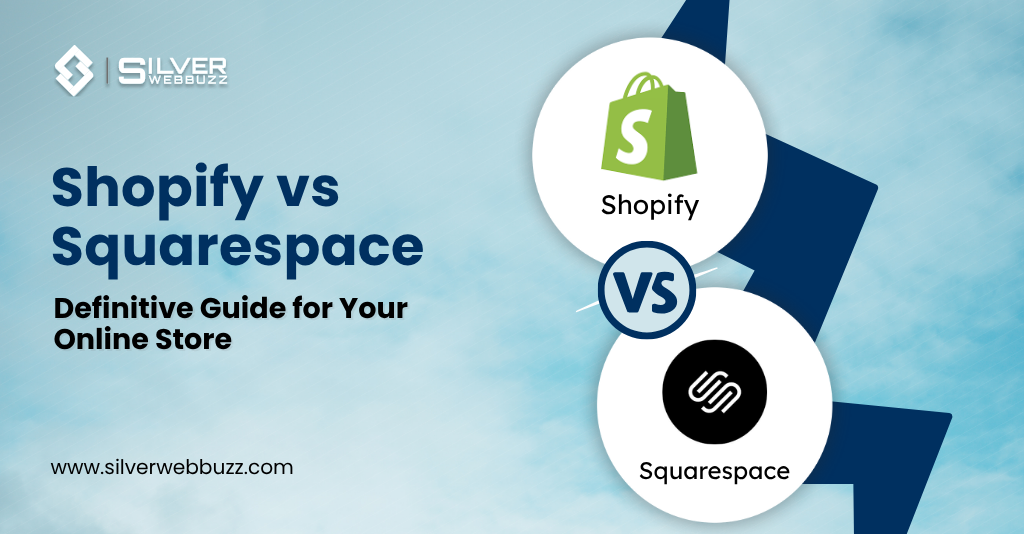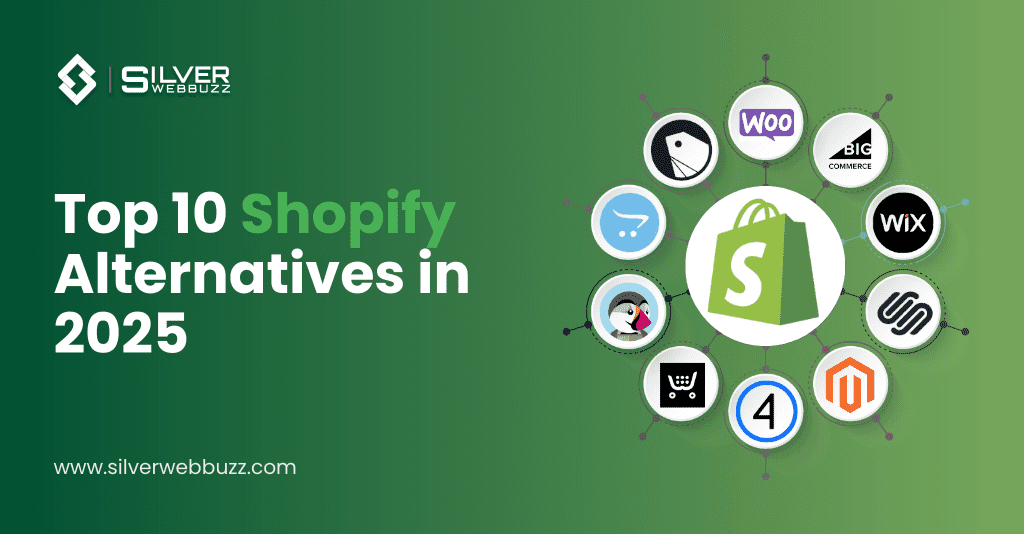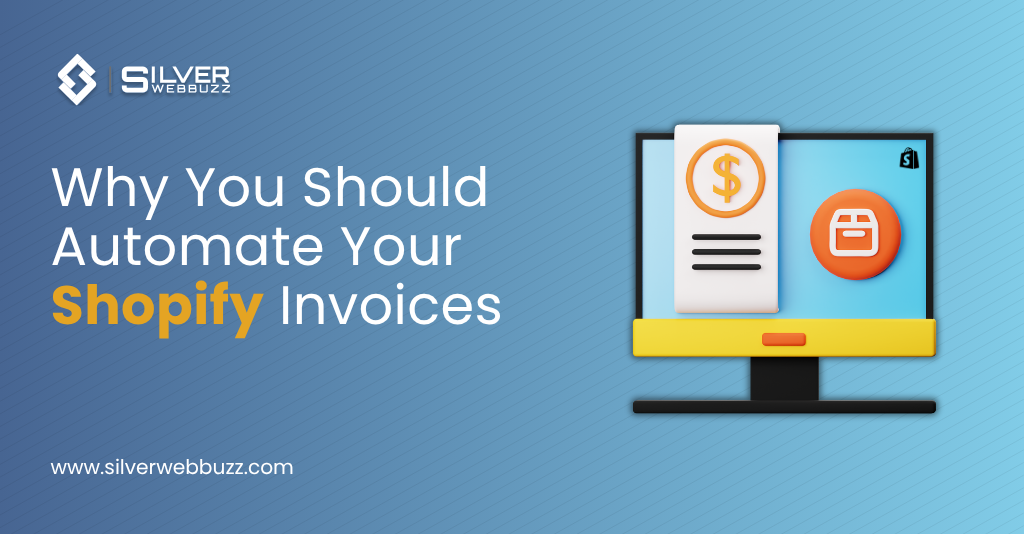You’re here because you’re standing at a critical crossroads. In one browser tab, you have Shopify, the undisputed heavyweight champion of eCommerce. In the other, Squarespace, the master of elegant design and simplicity. Both promise to be the perfect launchpad for your online business, but you know the truth: the platform you choose today will define your capabilities, your costs, and your potential for growth for years to come.
Making the wrong choice can lead to a cascade of frustrations—hitting a growth ceiling, wrestling with limited features, or facing a complex and costly migration down the line. But making the right choice empowers you with a digital foundation that not only supports your vision but actively accelerates it.
This is not just another surface-level comparison. This is the definitive, no-fluff, 4,500-word deep dive designed to give you absolute clarity. We will meticulously dissect every critical feature, from the granular details of transaction fees and SEO capabilities to the long-term implications of scalability and app ecosystems. By the end of this guide, you will be able to confidently choose the platform that aligns perfectly with your business goals for 2025 and beyond.
Key Takeaways: The Quick Answer
Choose Shopify if… your primary goal is to build a powerful, scalable, and feature-rich online store. It’s an eCommerce-first platform built for serious sellers, large and complex product catalogs, dropshipping, and multi-channel sales across platforms like Instagram, TikTok, and Amazon.
Choose Squarespace if… your primary goal is to create a visually stunning, design-forward website with solid, straightforward eCommerce capabilities. It’s the ideal choice for artists, creatives, consultants, service providers, and small businesses that prioritize brand aesthetic and ease of use over advanced, high-volume sales tools.
The Core Difference: Shopify is a world-class eCommerce platform that also has a website builder. Squarespace is a world-class website builder that also has eCommerce features. Your primary business goal dictates your choice.
Shopify vs Squarespace is a battle between an eCommerce-first platform (Shopify) and an all-in-one website builder with eCommerce features (Squarespace). Shopify offers unmatched sales tools, an enormous app ecosystem, and superior scalability for growing businesses. Squarespace shines with its award-winning design templates, intuitive drag-and-drop editor, and more affordable, all-inclusive pricing. Choose Shopify for serious, product-focused eCommerce operations; choose Squarespace if you prioritize beautiful design, content, and simplicity for a smaller store.
Shopify At A Glance

What is Shopify?
Shopify is a dedicated, cloud-based eCommerce platform that allows entrepreneurs and businesses of all sizes to set up, manage, and grow an online store. It’s a comprehensive, hosted solution, meaning you don’t need to worry about web servers, security, or technical infrastructure. It provides a single, unified dashboard to control every aspect of your business: product listings, inventory tracking, payment processing, shipping logistics, and marketing campaigns. Powering millions of businesses in over 175 countries, Shopify has become the gold standard for modern digital commerce.
Shopify Selling Points
- Built Specifically for eCommerce: Every single feature within Shopify is engineered with one goal in mind: to help you sell more. The checkout process is highly optimized for conversion, the product management is robust, and the analytics are focused on sales metrics. This commerce-centric DNA is its biggest advantage.
- Huge App Ecosystem: Shopify’s App Store is its superpower. With over 8,000 apps, it functions like an app store for your business. Need advanced email marketing? There’s Klaviyo. Want to start dropshipping? There’s DSers. Need a loyalty program? There’s Yotpo. This extensibility means you can adapt the platform to almost any business need, ensuring it can grow with you.
- Unmatched Multi-channel Selling: In 2025, selling only on your website is not enough. Shopify understands this better than anyone. It offers deep, native integrations that allow you to sync your product catalog and sell directly on Instagram, Facebook, TikTok Shop, Pinterest, eBay, and even Amazon, all managed from a single inventory pool in your Shopify admin.
- Superior Scalability for Growing Stores: Shopify is built to handle success. Whether you get featured on the news and experience a 10,000% traffic spike or grow your catalog to 20,000 SKUs, the platform’s robust infrastructure won’t break a sweat. For brands that reach massive scale, Shopify Plus offers an enterprise-level solution with dedicated support, unlimited bandwidth, and advanced customization capabilities.
Shopify Weaknesses
- Monthly App Costs Can Add Up: While the App Store is a strength, it can also be a significant financial drain. Many of the best, most powerful apps come with their own monthly subscription fees. It’s not uncommon for a growing Shopify store to spend an extra
50−300+ per month on essential apps for marketing, reviews, and subscriptions. - Steeper Design Learning Curve: Achieving a truly unique storefront design often requires more effort than on Squarespace. While the “Online Store 2.0” editor is a huge leap forward, making fine-tuned layout changes or implementing highly custom designs typically requires editing code in Shopify’s proprietary templating language, Liquid, or hiring a Shopify Expert.
- Reliance on Third-Party Apps for Core Functions: Some features that you might expect to be built-in, like sophisticated product reviews or subscription billing, almost always require a third-party app. This contrasts with Squarespace’s all-in-one approach, where more functionality is included out of the box.
- Transaction Fees on Third-Party Gateways: Shopify heavily incentivizes the use of its native Shopify Payments. Suppose your business is in a high-risk industry or you require a specific payment processor not supported by Shopify Payments. In that case, you will be penalized with an additional transaction fee (0.5% to 2.0%) on every sale, on top of what your payment provider charges.
Popular Shopify Websites
- Gymshark: A fitness apparel behemoth that scaled from a garage startup to a billion-dollar brand on Shopify Plus.
- Allbirds: The famous sustainable footwear company, known for its clean design and direct-to-consumer success, built on Shopify.
- Kylie Cosmetics: A prime example of a creator-led brand that leveraged social media and the power of Shopify to build a beauty empire.
- Heinz: The iconic global food brand uses Shopify for its “Heinz to Home” direct-to-consumer initiative, showcasing the platform’s ability to serve established enterprises.
Squarespace At A Glance

What is Squarespace?
Squarespace is a premium, all-in-one website building and hosting platform celebrated for its industry-leading design templates. It began as the go-to solution for creatives—photographers, designers, and artists—to build stunning online portfolios. Over the years, it has evolved into a comprehensive platform that seamlessly integrates blogging, scheduling, and robust Squarespace eCommerce features, making it a formidable choice for anyone who values aesthetics and simplicity.
Squarespace Selling Points
- Stunning, Award-Winning Templates: This is Squarespace’s signature strength. Its templates are impeccably designed, modern, and fully mobile-responsive right out of the box. They allow businesses to achieve a high-end, professional look without hiring a designer, which is a massive value proposition for new entrepreneurs.
- Truly All-in-One Solution: Simplicity is key. A Squarespace plan includes your website hosting, a free custom domain for the first year, SSL security, and a suite of built-in tools. You don’t have to piece together different services; it’s all managed under one roof with one bill.
Intuitive Visual Editing with Fluid Engine: Squarespace’s latest editor, Fluid Engine, provides a true drag-and-drop experience on a flexible grid system. This gives users incredible control over page layouts without needing to understand code, making it far more creatively freeing than Shopify’s more structured editor. - Strong Built-in Features: Many tools that cost extra on Shopify are included in Squarespace. This includes powerful blogging tools, podcast hosting, integrated Squarespace Scheduling for appointments, and Squarespace Email Campaigns for marketing. This built-in approach can lead to a lower total cost of ownership for businesses that need these specific features.
Squarespace Weaknesses
- Limited eCommerce Depth and Scalability: Squarespace’s eCommerce tools are excellent for basic needs but lack the advanced functionality required for high-volume sales. It’s missing features like advanced inventory management (purchase orders, stock transfers), a native POS system for complex retail, and the ability to handle thousands of product variants efficiently.
- Small Extension Marketplace: While Shopify has an 8,000+ app behemoth, the Squarespace Extensions marketplace is tiny in comparison, with only a few dozen integrations. This severely limits your ability to add specialized functionality like dropshipping automation, advanced analytics, or connections to niche third-party logistics (3PL) providers.
- Restrictive Payment and Shipping Options: You are locked into using Stripe, PayPal, and Square (for POS). This is a major limitation for businesses wanting to offer local payment methods in different countries or use a specific high-risk payment gateway. Shipping options are also less flexible compared to Shopify’s deep carrier integrations.
- No Multi-Language Support: Squarespace does not offer a native way to create a fully multi-language website. While there are third-party workarounds, they are often clunky and not officially supported. This is a significant drawback for any business with international ambitions.
Popular Squarespace Websites
- Sadie Williams: A London-based fashion designer whose site perfectly showcases how Squarespace blends commerce with a high-fashion portfolio aesthetic.
- Lumio: The creator of the innovative, book-shaped lamp uses a clean, minimalist Squarespace site to tell its brand story and sell its unique product.
- Keanu Reeves’ Arch Motorcycle: A sleek, image-heavy website that proves Squarespace can deliver a premium, high-end brand experience for luxury products.
- VIBE Magazine: The iconic music and entertainment publication uses Squarespace’s strong blogging and content management features to power its digital presence.
Shopify vs Squarespace: The Ultimate Feature-by-Feature Deep Dive
This is where we go beyond the surface. Let’s dissect the Shopify and Squarespace comparison across the categories that will make or break your business.
Shopify vs Squarespace: Pricing Comparison
Pricing is far more than the sticker price. It’s a combination of monthly fees, per-transaction costs, and the “hidden” costs of apps and add-ons.
Shopify Plans Breakdown
Shopify: Offers a 3-day free trial, followed by an introductory offer (e.g., your first month for $1). This lets you build out your store before fully committing.
| Plan | Price/Month | Online Credit Card Rate | Transaction Fee (3rd Party Gateway) | Best For |
|---|---|---|---|---|
| Basic | $39 | 2.9% + 30¢ | 2.0% | New businesses, startups |
| Shopify | $105 | 2.6% + 30¢ | 1.0% | Growing businesses need more reports/staff |
| Advanced | $399 | 2.4% + 30¢ | 0.5% | Scaling businesses with high volume |
Squarespace Plans Breakdown (Annual Pricing)
Squarespace: Offers a longer 14-day free trial, giving you ample time to test the design tools. To sell products, you need a commerce-enabled plan.
| Plan | Price/Month (Annual) | Transaction Fee | Key Features | Best For |
|---|---|---|---|---|
| Business | $23 | 3% | Basic eCommerce, unlimited products | Not recommended for sales due to the fee |
| Basic Commerce | $27 | 0% | Customer accounts, POS app, analytics | The true starting point for any store |
| Advanced Commerce | $49 | 0% | Abandoned cart, subscriptions, advanced shipping | Businesses needing conversion tools |
Total Cost of Ownership: A Realistic Breakdown
This is the most crucial financial comparison.
- Shopify’s Total Cost: Your monthly bill will be your plan fee + your app fees. A typical growing store on the **Basic plan (
39/mo)∗∗mightaddappsforemailmarketing(39/mo)** might add apps for email marketing (39/mo)∗∗mightaddappsforemailmarketing(20/mo), product reviews (15/mo),andSEO(15/mo), and SEO (15/mo),andSEO(20/mo), bringing the total cost closer to $94/month. This cost is an investment in powerful, specialized tools. - Squarespace’s Total Cost: Your cost is more predictable. If you’re on the Basic Commerce plan ($27/mo), that’s likely your total cost, as features like customer accounts and analytics are built in. However, if you need appointment scheduling, that’s an extra add-on starting at $16/mo.
Verdict: Squarespace is cheaper for beginners with simple needs. Shopify provides better long-term value for scaling businesses, as its features and lower credit card rates on higher plans will save you money as your sales volume increases. That 3% transaction fee on the Squarespace Business plan is a trap for aspiring sellers—always choose the Basic Commerce plan.
Payment Gateways & Fees
The ability to accept payments easily and affordably is paramount.
Shopify: This is a landslide victory for Shopify.
- Shopify Payments: Its integrated solution (powered by Stripe) offers competitive rates, instant setup, and full integration with your dashboard. It also enables Shop Pay, an accelerated checkout that is one of the highest-converting on the internet.
- Third-Party Gateways: Shopify supports over 100 payment gateways globally. This means you can offer local payment methods (like iDEAL in the Netherlands or Bancontact in Belgium), use industry-specific gateways, and integrate with dozens of “Buy Now, Pay Later” (BNPL) services like Klarna and Afterpay.
Squarespace: Highly restrictive.
- You can only connect Stripe and PayPal to accept online payments.
- For Point of Sale, you can use Square.
- While Stripe and PayPal are excellent, the lack of other options can be a dealbreaker. You cannot offer diverse local payment methods, which can significantly hurt international conversion rates.
Verdict: Shopify is the unequivocal winner, offering unparalleled flexibility that supports global growth and customer convenience.
Design Features & Customization
This is where the philosophical difference between the two platforms is most apparent.
Squarespace: The Designer’s Choice
- Fluid Engine: This is a masterpiece of user interface design. It allows you to place blocks (text, images, buttons) anywhere on a visual grid, overlap them, and resize them with precision. It feels like designing in a tool like Canva or Figma, giving you immense creative freedom without writing a single line of code.
- Template Quality: Squarespace’s templates are curated for aesthetic excellence. They are designed by a world-class team and set the standard for modern, clean, and visually impactful web design.
Shopify: The Merchant’s Choice
- Online Store 2.0: Shopify’s editor is section-based. You can add, remove, and reorder pre-designed “sections” on any page. This is fantastic for maintaining a consistent, conversion-optimized layout but offers less granular control than Fluid Engine. For example, moving a button 10 pixels to the left often requires diving into CSS code.
- Theme Marketplace: Shopify has a vast theme marketplace with thousands of options from third-party developers. While many are excellent, quality can vary, and premium themes can cost
200−350. The focus is always on function and conversion over pure aesthetics.
Verdict: For pure design freedom and out-of-the-box beauty, Squarespace is the winner. For functional, conversion-focused design with near-limitless potential for developers, Shopify leads
Ease of Use & Learning Curve
Onboarding Experience: Your First Hour
- Squarespace: The onboarding process is a guided, visual experience. It asks you about your site’s purpose and suggests templates. Within minutes, you are inside the editor, clicking on text and images and replacing them with your own content. The learning curve is incredibly gentle.
- Shopify: The onboarding is a step-by-step checklist focused on business setup: Add your first product, set up payments, configure shipping rates, choose a theme. It’s logical and efficient but less creatively inspiring. The initial setup is easy, but mastering the full depth of its features (like collections, discounts, and apps) takes more time.
Verdict: Squarespace is easier for absolute beginners to get a beautiful site live. Shopify is easy to start selling with, but has a deeper, more complex feature set that requires more learning to master fully.
Shopify vs Squarespace: SEO Capabilities
Search Engine Optimization is crucial for organic traffic. Both platforms have good SEO foundations, but the devil is in the details.
On-Page SEO (Titles, Metas, URLs)
- Both: Both Shopify and Squarespace make it incredibly easy to edit SEO titles, meta descriptions, image alt-text, and URL slugs for all your pages, products, and blog posts. This covers the absolute basics.
Technical SEO (Control and Structure)
- Shopify: Offers more control. It automatically generates canonical tags to prevent duplicate content issues and allows for more advanced schema markup via apps. For advanced users, Shopify even allows editing of the robots.txt file via a robots.txt.liquid template, giving you full control over search engine crawlers. Site speed and mobile performance are also top priorities for the platform.
- Squarespace: Handles technical SEO automatically in the background. It generates a sitemap, uses clean HTML, and implements SSL correctly. However, you have no access to edit the robots.txt file and have less control over structured data (schema), which can be a limitation for advanced SEO strategies.
Blogging & Content SEO
- Squarespace: The winner here. Its blogging engine is far superior, with more flexible layout options, built-in author profiles, and better content presentation. This makes it a better platform for businesses that rely heavily on content marketing and thought leadership to drive traffic.
- Shopify: Has a functional but very basic blog. The editor is clunky, and achieving sophisticated layouts for articles is difficult without using apps or custom code. It’s sufficient for store updates, but not for running a serious publication.
Verdict: For technical control and eCommerce-focused SEO, Shopify has the edge, especially with apps. For blogging and content-driven SEO, Squarespace is significantly better.
Marketing Tools & Integrations
Email Marketing
- Shopify Email: A powerful, free tool built right into Shopify. You get 10,000 free email sends per month. It comes with beautiful, brand-synced templates and pre-built automations for abandoned carts, welcome series, and customer win-back campaigns. Its real strength is the deep integration with customer data and a seamless connection to industry leaders like Klaviyo for hyper-advanced segmentation.
- Squarespace Email Campaigns: A beautifully designed and easy-to-use add-on, but it comes at an extra cost (starting around $5/month). It has great templates and basic automations but lacks the deep eCommerce data integration needed for sophisticated campaigns (e.g., targeting customers by purchase history or lifetime value).
Social Media Marketing
- Shopify: The undisputed champion. Its integrations with Facebook, Instagram, and TikTok are deep and seamless. You can manage shoppable posts, sync your entire catalog to create a shop tab on your social profiles, and track conversions from social ads directly in your Shopify dashboard.
- Squarespace: Offers good, basic integrations. You can sync products to create shoppable posts and link your accounts. However, the integrations are less robust, offer fewer management features, and lack the deep sales channel attribution that Shopify provides.
Abandoned Cart Recovery
- Shopify: This crucial feature is available on all Shopify plans, including the Basic plan. You can set up an automated email sequence to be sent to customers who leave items in their cart, a proven method for recovering lost sales.
- Squarespace: This feature is only available on the most expensive Advanced Commerce plan ($49/mo). Gating such an essential eCommerce tool is a significant disadvantage for businesses on lower-tier plans.
Verdict: Across the board, Shopify offers a more powerful, integrated, and effective suite of marketing tools, both built-in and through its app ecosystem.
Shopify vs Squarespace: Customer Support
- Shopify: Offers the gold standard: true 24/7 support via live chat, email, and phone. When your store is down at 3 AM during a flash sale, getting a human on the line immediately is invaluable. Their Help Center is also incredibly detailed and the community forums are a treasure trove of information.
- Squarespace: Support is high-quality but less accessible. They offer 24/7 email support and live chat, but the live chat is restricted to business hours (Monday to Friday). There is no phone support. While their team is knowledgeable, the lack of immediate 24/7 live help can be a point of frustration during emergencies.
Verdict: For accessibility and peace of mind, Shopify’s 24/7 multi-channel support is the clear winner.
Shopify vs Squarespace: Security
- Shopify: Security is non-negotiable and built into the core of the platform. Every single store on Shopify is Level 1 PCI-DSS compliant by default. This is the highest level of compliance for handling credit card data and significantly reduces your liability. Free SSL certificates are standard, and the platform includes built-in fraud analysis to flag potentially risky orders.
- Squarespace: Also very secure. All sites come with a free SSL certificate to encrypt traffic. However, Squarespace itself is not PCI compliant. The payment processors it uses (Stripe, PayPal) are, so the transactions are secure, but the compliance burden is technically shared. This is a subtle but important distinction for risk-averse businesses.
Verdict: Both are secure, but Shopify’s default PCI compliance provides a higher level of security and peace of mind for merchants.
Shopify vs Squarespace: Unique Features & Bonus Tools
Point of Sale (POS)
- Shopify POS: A powerful, dedicated system for unifying online and in-person sales. The free POS Lite plan lets you accept payments on your phone. The POS Pro plan ($89/mo per location) transforms it into a full retail OS with smart inventory management, staff permissions, local pickup/delivery, and robust hardware integrations (barcode scanners, cash drawers).
- Squarespace POS: Much simpler. Through an integration with Square, you can use the Squarespace app to accept in-person payments, which sync with your online inventory. It’s great for occasional market stalls but lacks the advanced retail features of Shopify POS Pro.
International Selling & Multi-Currency
- Shopify: A global powerhouse. Shopify Markets is a built-in control center for managing international commerce. You can set up country-specific domains (e.g., yourstore.de), set product prices in local currencies, and get estimates for duties and import taxes at checkout. It fully supports multi-language storefronts via apps.
- Squarespace: Extremely limited. You can add a currency switcher to your site, but it’s purely cosmetic. The customer will always be charged in your store’s single default currency at the final checkout step. This can lead to confusion and lower conversion rates. It has no native multi-language capabilities.
Inventory Management
- Shopify: Built for complexity. You can track inventory across multiple physical stores, warehouses, or dropshipping locations. It supports purchase orders, stock transfers between locations, and detailed inventory history reports. Bulk editing tools make managing thousands of products feasible.
- Squarespace: Simple and effective for small catalogs. It tracks stock levels and can display “limited availability” labels. However, it lacks multi-location support, purchase orders, and the advanced tools needed to manage a complex supply chain.
Verdict: For any feature related to retail, international sales, or complex inventory, Shopify is light-years ahead.
Shopify vs Squarespace: Recommendations by Business Type
Let’s apply everything we’ve learned to your specific situation.
For Creatives & Service Providers (Artists, Photographers, Consultants):
- Winner: Squarespace. Your brand’s aesthetic is paramount. Squarespace allows you to build a breathtakingly beautiful portfolio or service site that builds credibility. Its integrated Squarespace Scheduling is best-in-class for booking clients, and its simple eCommerce is perfect for selling prints, digital downloads, or session packages without the complexity of Shopify.
For Product-Based eCommerce Businesses (Apparel, CPG, Electronics):
- Winner: Shopify. This isn’t even a competition. You live and die by your sales tools. You need Shopify’s superior inventory management, vast shipping integrations, multi-channel sales capabilities, and the endless customization offered by the App Store to optimize every step of your customer’s journey.
For Startups & Small Businesses on a Budget:
- A Tough Call. If your catalog is small (<30 products) and your number one priority is a polished look with a predictable, low monthly cost, start with Squarespace’s Basic Commerce plan. If you have any ambition to scale, dropship, or sell in-person, start with Shopify. The pain of migrating later is often greater than the slightly higher initial cost.
For Growing & Enterprise-level Brands:
- Winner: Shopify. Squarespace is not a viable option at this level. Shopify’s robust infrastructure, Shopify Plus for enterprise clients, extensive API for custom development, and fulfillment network are specifically designed to handle the complexity and volume of large-scale operations.
For Digital Products & Subscriptions:
- Winner: Shopify (by a margin). Both can sell digital products easily. However, Shopify’s app ecosystem gives it the edge for subscriptions. Apps like Recharge provide incredibly powerful, flexible subscription management tools that far exceed Squarespace’s built-in capabilities.
For Dropshipping Stores:
- Winner: Shopify. It is the global standard for dropshipping. Deep integrations with services like DSers (for AliExpress), Printful (for print-on-demand), and Spocket automate the entire process from order placement to fulfillment. Squarespace has no comparable native functionality.
AI-Powered Features & Future Roadmaps
- Shopify Magic: Shopify is weaving AI into every corner of the platform. This suite of tools, called “Shopify Magic,” can instantly generate compelling product descriptions from just a few keywords, write email subject lines, create FAQ page content, and even provide AI-powered responses in the live chat support tool.
- Squarespace AI: Squarespace is using AI to augment its core strength: content and design. Its AI tools can help you write or rephrase entire sections of your website, generate a starting point for a blog post, or craft email campaign copy, streamlining the content creation process.
The Future: Both platforms are racing towards a future where AI provides predictive analytics (forecasting sales and inventory needs), hyper-personalization (showing unique content to each visitor), and greater automation of routine business tasks.
Integration Capabilities & App Ecosystem
Shopify App Store: This is the core of Shopify’s power. It’s a thriving marketplace with over 8,000 vetted third-party applications.Essential App Categories:
- Email Marketing: Klaviyo, Omnisend
- Reviews & UGC: Yotpo, Loox, Judge.me
- Shipping & Fulfillment: ShipStation, Shippo
- SEO: SEO Manager, Plug in SEO
- Subscriptions: Recharge, Bold Subscriptions
- Loyalty & Rewards: Smile.io, Yotpo Loyalty
This ecosystem means if you can think of a feature, there’s probably an app for it.
Squarespace Extensions: This is a much smaller, curated collection of a few dozen official integrations. It covers the essentials like Printful for print-on-demand and ShipStation for shipping, but lacks the breadth, choice, and competition of Shopify’s marketplace. You are fundamentally limited to what Squarespace decides to build or approve.
Verdict: The Shopify App Store provides a near-insurmountable advantage in flexibility and power.
Shopify vs Squarespace Feature Comparison Table
| Feature | Shopify | Squarespace | Winner |
|---|---|---|---|
| Ease of Use | Easy setup, optimized for eCommerce workflows | Extremely beginner-friendly with drag-and-drop editing | Squarespace |
| Design & Templates | Functional themes, but customization requires coding | Stunning, modern templates ideal for creatives | Squarespace |
| eCommerce Features | Advanced eCommerce, scalable for large stores | Basic eCommerce, good for small catalogs | Shopify |
| SEO Tools | Great SEO customization via apps and settings | Good basics, but lacks full control | Shopify |
| App Ecosystem | 8,000+ apps, robust marketplace and APIs | Limited extensions, fewer integrations | Shopify |
| Payment Gateways | 100+ options, Shopify Payments, global support | Stripe & PayPal only, limited options | Shopify |
| Inventory Mngmt | Advanced tools, bulk upload, multi-location | Very limited for high-volume sellers | Shopify |
| International Selling | Multi-language & currency with Shopify Markets | Limited currency, no multi-language storefront | Shopify |
| Point of Sale (POS) | Fully integrated, multi-location retail OS | Basic integration with Square for simple sales | Shopify |
| Shipping | Real-time rates, multiple partners, dropshipping | USPS, FedEx integration; limited automation | Shopify |
| Blogging | Basic blog with limited formatting options | Strong blogging & content formatting tools | Squarespace |
| Marketing Tools | Built-in email, advanced ad integrations | Basic email campaigns, limited integrations | Shopify |
| Abandoned Cart | Available on all plans | Only on most expensive plan | Shopify |
| Customer Support | 24/7 chat, email, and phone support | Email only (chat on higher plans) | Shopify |
| Security | Level 1 PCI-DSS compliant, SSL, fraud analysis | SSL included, not PCI compliant itself | Shopify |
| Analytics & Reports | Advanced, customizable reports | Simple dashboard, limited eCommerce data | Shopify |
| Pricing | Starts at $39/mo + app costs | Starts at $23/mo; fewer hidden costs | Squarespace |
| Scalability | Excellent for scaling from small to enterprise | Suitable only for small to mid-level business | Shopify |
| Best For | Full-scale eCommerce, dropshipping, large inventories | Creatives, small stores, service-based websites | Depends on Use Case |
Developer Flexibility & API Access
- Shopify: A developer’s playground. Shopify provides extensive and well-documented REST and GraphQL APIs, allowing for the creation of custom apps, private integrations with internal systems (like an ERP), and complex headless commerce builds. Its theme language, Liquid, is powerful and supported by a massive global community of developers and agencies.
- Squarespace: More of a closed system. It offers a developer platform with APIs, but they are more limited in scope. Customization is mostly achieved through code injection (adding CSS and Javascript to your site), which is less robust than building on Shopify’s API. It’s designed for customization, not deep integration.
Verdict: For any business that may one day need custom development, Shopify is the only serious choice.
Final Verdict: Which Platform Should You Choose in 2025?
After this exhaustive analysis, the choice should be clear. It’s not about which platform is “better,” but which platform is better for you.
Choose Shopify if your primary purpose is selling products, and you have ambitions to grow. If your vocabulary includes words like “inventory,” “conversion rate,” “fulfillment,” and “average order value,” then Shopify is speaking your language. It is the most powerful, flexible, and scalable commerce platform available to entrepreneurs today. It’s an investment in a system that will never be the reason your business can’t reach the next level.
Choose Squarespace if your primary purpose is to build a beautiful online presence, where commerce is a component, not the entire focus. If you are a creative professional, a consultant, or a small business where the strength of your brand’s visual story is your biggest asset, Squarespace is the perfect partner. It will empower you to create a stunning, professional website with minimal effort and cost, with perfectly adequate tools to sell your products and services on the side.
Conclusion
In conclusion, choosing between Shopify and Squarespace depends on your business goals—Shopify excels in powerful eCommerce features, while Squarespace shines in design and simplicity. If you’re looking to build a high-performing, customized online store, partnering with the best e-commerce development company is the smart move. At Silver WebBuzz, we specialize in creating scalable, user-friendly Shopify development services and Squarespace stores tailored to your unique needs. Let us help you turn your vision into a thriving digital storefront.
Ready to launch your store?
Contact Silver WebBuzz today and let’s build something amazing together!




